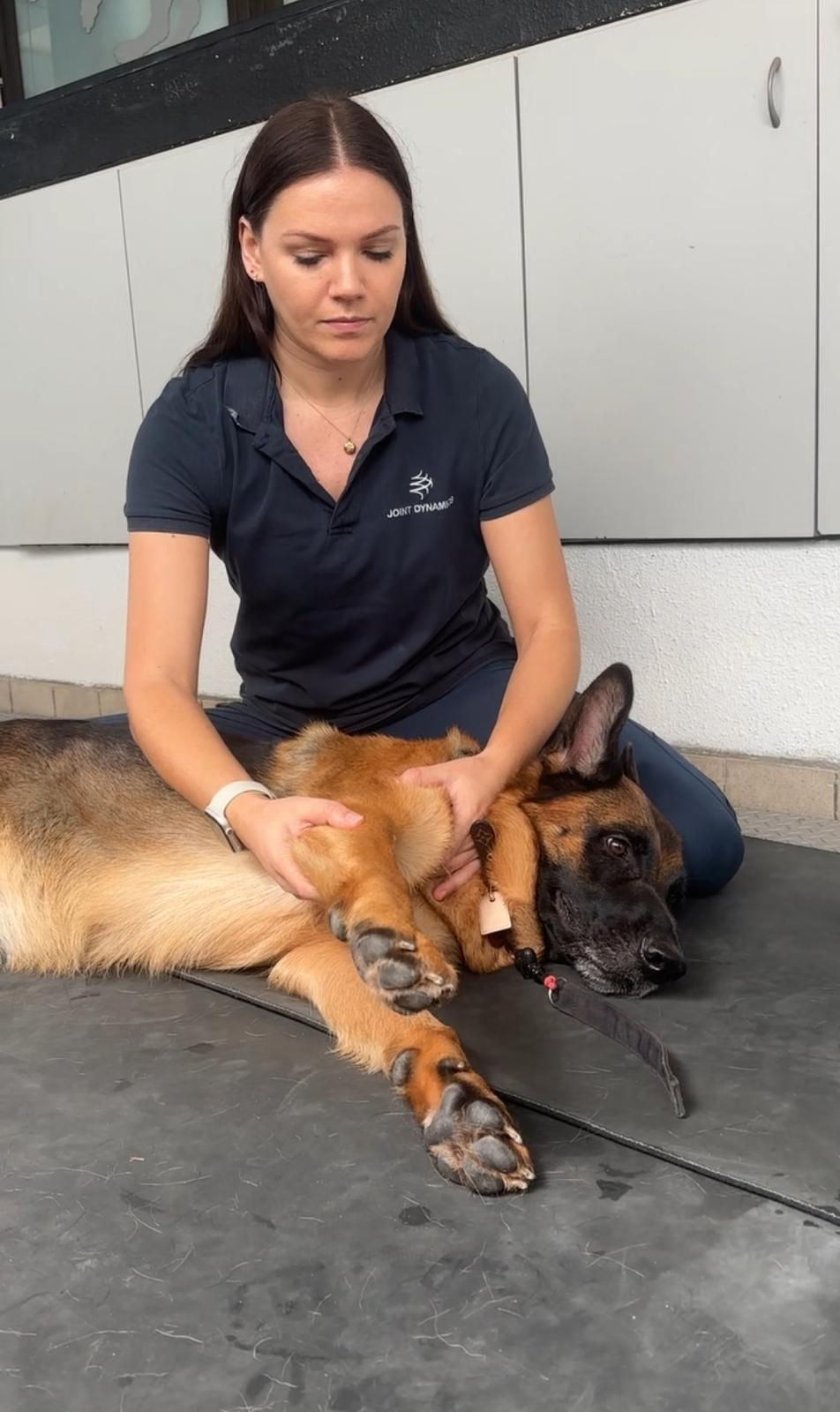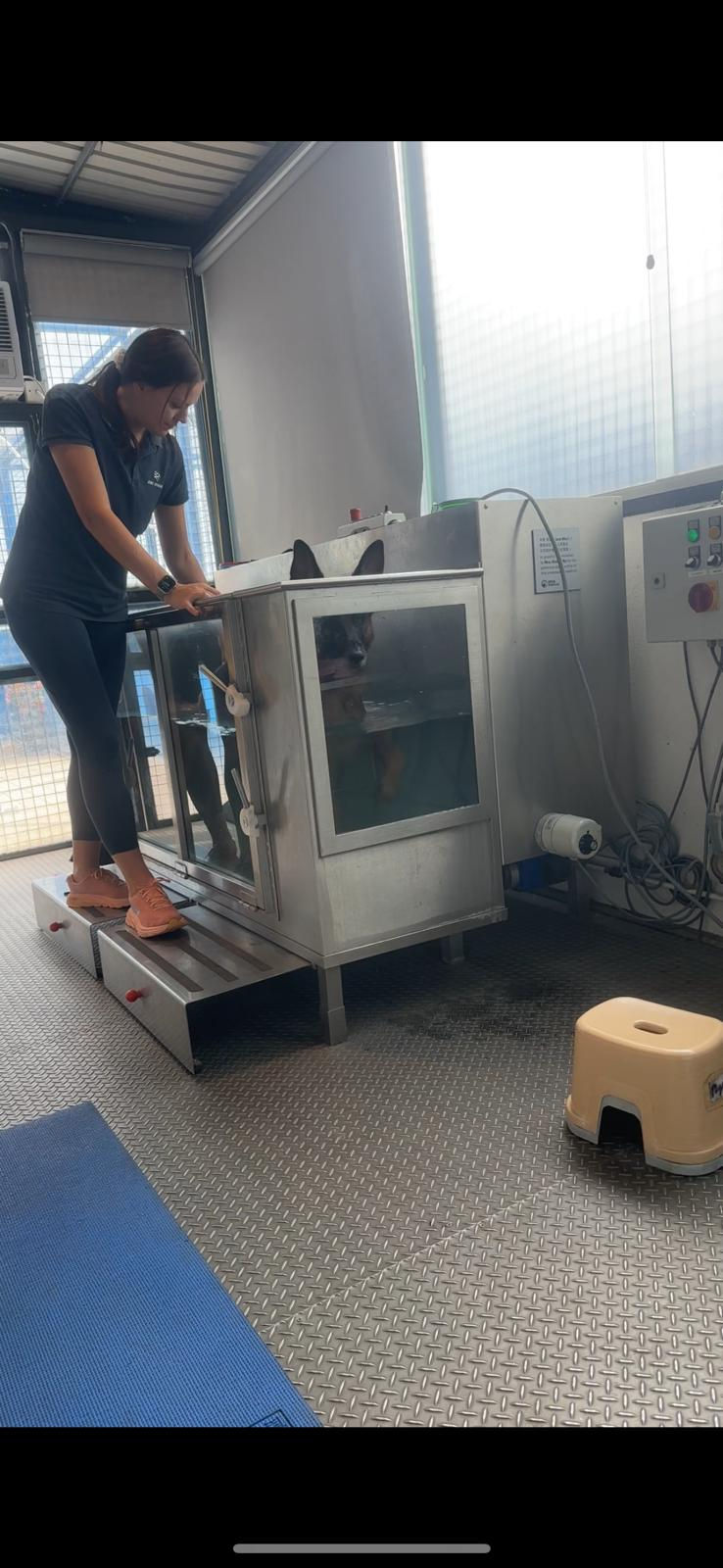Dog Physiotherapy: What are The Pros and Cons?
- Global Paws

- Dec 13, 2024
- 3 min read

So, let’s talk about something that is turning tails and wagging tongues in the pet world: dog physiotherapy! Yes, you heard that right. Just like humans, dogs can benefit from physical therapy.
Dog physiotherapy could be the answer if your pup feels under the weather or is recovering from an injury. Let’s dive into the pros and cons so you can decide if this is the right path for your furry friend!
What is Dog Physiotherapy?
Imagine your dog strutting into a spa where it gets pampered, massaged, and exercised to help it feel better. That is dog physiotherapy! It is a delightful blend of soothing massages, trigger point magic (fancy talk for gently releasing those pesky muscle knots), and carefully guided exercises.
It is all designed to ease pain, boost mobility, and get your pet back on its paws after an injury. Techniques like massage, hydrotherapy (basically swimming for dogs), and special exercises help them.
This therapeutic treasure trove works hand-in-paw with veterinary care to tackle a whole menagerie of issues related to:
Muscles
Tendons
Ligaments
Bones
Joints
Nerves
It is a fantastic way to keep your working or competing dog in tip-top shape. Who knew helping your pet could be so much fun?
Common Conditions Treated
Dog physiotherapy can be used effectively for:
1. Post-Surgical Rehabilitation
If your dog just had surgery, like getting a new knee or hip, physiotherapy is like their trainer helping them recover. It aids in restoring strength and flexibility so they can get back to chasing squirrels in no time!
2. Chronic Conditions
Is your dog dealing with ongoing issues like arthritis? Dog physiotherapy is a superhero for those problems, too! It helps manage pain and improves joint function so your dog can move quickly.
Looking for an expert to help your beloved pet? Global Paws is here to help!
3. Working or Competing Dogs
Got a pup who is more than just a couch potato? Physiotherapy can supercharge your working or competing dog’s performance! Other conditions that can be helped with dog physiotherapy are osteoarthritis, hip dysplasia, and neurological disorders.
Pros of Dog Physiotherapy

1. Improved Mobility & Pain Relief
No one likes feeling stiff. Dog physiotherapy helps improve your pup’s range of motion and reduces that awful stiffness. It is like giving your dog a second chance to boogie!
2. Pain Management
Using techniques like massage and hydrotherapy can help with pain relief. Picture them getting a lovely rubdown—pure bliss!
3. Non-Invasive Treatment Option
This therapy is known as an alternative to medication. Forget about popping pills! Dog physiotherapy is a non-surgical, drug-free way to tackle issues. This can be a total game-changer if your dog is sensitive to meds.
4. Rehabilitation and Recovery
Faster healing is all your pooch needs when they feel defeated. With targeted exercises, physiotherapy can help your dog bounce back from injuries and surgeries faster than you can say “fetch!” It is all about getting them back to their playful selves.
Cons of Dog Physiotherapy

1. Cost and Accessibility
Expense considerations? Okay, that makes sense. Let’s get real. Dog physiotherapy can be expensive, and not every town has fancy pet physiotherapists. You might need to save a few extra treats for those sessions!
But physiotherapy should definitely be on your radar when it comes to helping your pooch bounce back to its cheerful, tail-wagging self!
2. Time Commitment
Regular physiotherapy requires commitment. It is like a part-time gig for you and your dog, with many sessions and homework exercises. It is worth it for your best friend!
However, this therapy is like a healing hug for your beloved furry friend, easing their pain and discomfort so they can dive back into their favourite activities, whether chasing squirrels, rolling in the grass, or just being the goofy goofball we all adore!
3. Potential Risks and Limitations
Risk of incorrect treatment? Here is the scoop: If you do not get a proper diagnosis first, physiotherapy might miss the mark and not actually fix what is wrong. You do not want to make things worse, do you?
4. Limited Evidence for Some Treatments
While many doggy treatments are fantastic, not all have solid scientific backing. So, always make sure to do your research, talk to your vet, or simply ask for help from professionals like our physiotherapist.
In a nutshell, dog physiotherapy can benefit your furry friend so much. Remember to weigh these benefits against the potential drawbacks, like cost and time commitment. Always consult your vet first to see if physiotherapy is the right fit for your pup.
And speaking of travel for your pet, remember to check out Global Paws! We will ensure a personalised, stress-free travel experience for you and your furry family. Let’s make every journey a fun-filled adventure! Contact us now!




Komentáře